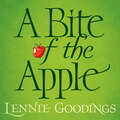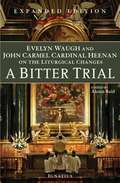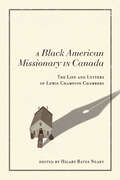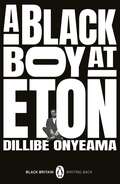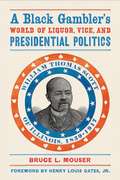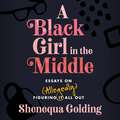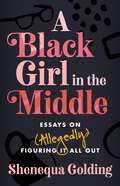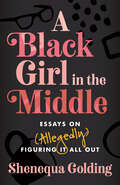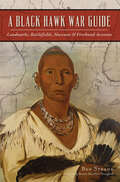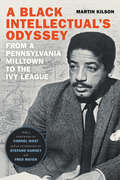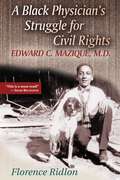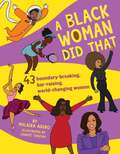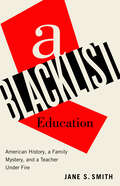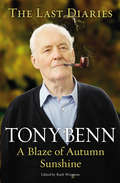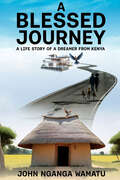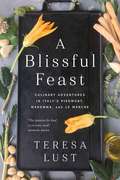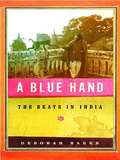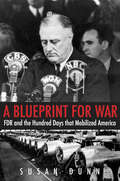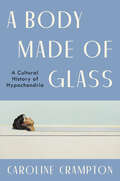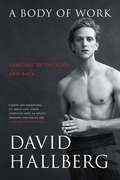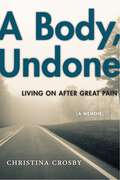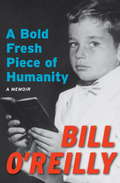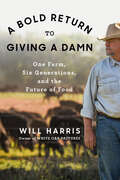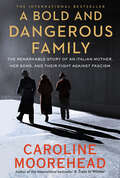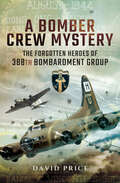- Table View
- List View
A Bite of the Apple
by Lennie Goodings'The moment I got my job at Virago in 1978 I knew it would be a long time before I would leave. I certainly wouldn't have had the brazen hope then-only twenty-five and very recently new to Britain-that I would ever become the Publisher, but I did know that I had found my home: where books, ideas, politics, imagination, feminism, and business was the air we breathed . . .'A Bite of the Apple is part-memoir, part history of Virago, and part thoughts on over forty years of feminist publishing. This is the story of how the authors and staff who, driven by passion, conviction and excitement, have made Virago Press one of the most important and influential English-language publishers in the world. Lennie Goodings has been with the iconic press founded by Carmen Callil almost since the start. First a publicist and then for over twenty years, publisher and editor, she has worked with extraordinary authors: Margaret Atwood, Marilynne Robinson, Sarah Waters, Linda Grant, Natasha Walter, Naomi Wolf and Maya Angelou among many others.Virago has been a life-changer for Lennie Goodings - but certainly not only for her. Following the chronology of the press and the enormous breadth of the Virago titles published over these years, she sets her story in the context of feminism, and segues into thoughts on editing, post-feminism, reading, breaking boundaries, and the Virago Modern Classics. Virago lives within the tension between idealism and pragmatism; between sisterhood and celebrity; between watching feminism wax and wane at the same time as knowing so many of the battles are still to be won. This book is about how it felt to be there.A Bite of the Apple is a celebration of writing, of publishing, and of reading.
A Bitter Trial: Evelyn Waugh And John Carmel Cardinal Heenan On The Liturgical Changes
by Evelyn Waugh Alcuin Reid John HeenanEnglish author Evelyn Waugh, most famous for his novel Brideshead Revisited, became a Roman Catholic in 1930. For the last decade of his life, however, Waugh experienced the changes being made to the Church's liturgy to be nothing short of a bitter trial. In John Cardinal Heenan, Waugh found a sympathetic pastor and somewhat of a kindred spirit. <p><p> This volume brings together the personal correspondence between Waugh and Heenan during the 1960s, a trying period for many faithful Catholics. It begins with a 1962 article Waugh wrote for the Spectator followed by a response from then Archbishop Heenan, who at the time was a participant at the Second Vatican Council. These and the other writings included in this book paint a vivid picture of two prominent and loyal English Catholics who lamented the loss of Latin and the rupture of tradition that resulted from Vatican II. <p> In the light of the pontificate of Pope Benedict XVI, many Catholics are looking again at the post-conciliar liturgical changes. To this reform of the reform of the liturgy now underway in the Roman Catholic Church, both Heenan and Waugh have much to contribute.
A Black American Missionary in Canada: The Life and Letters of Lewis Champion Chambers (McGill-Queen's Studies in the History of Religion)
by Hilary Bates NearyLewis Champion Chambers is one of the forgotten figures of Canadian Black history and the history of religion in Canada. Born enslaved in Maryland, Chambers purchased his freedom as a young man before moving to Canada West in 1854; there he farmed and in time served as a pastor and missionary until 1868. Between 1858 and 1867 he wrote nearly one hundred letters to the secretary of the American Missionary Association in New York, describing the progress of his work and the challenges faced by his community. Now preserved in the collections of the Amistad Research Center at Tulane University, Chambers’s letters provide a rare perspective on the everyday lives of Black settlers during a formative period in Canadian history. Hilary Neary presents Chambers’s letters, weaving into a compelling narrative his vivid accounts of ministering in forest camps and small urban churches, establishing Sabbath schools and temperance societies, combating prejudice, and offering spiritual encouragement. Chambers’s life as an American in Canada intersected with significant events in nineteenth-century Black history: manumission, the Fugitive Slave Act, the Underground Railroad, the Civil War, Emancipation, and Reconstruction. Throughout, Chambers’s fervent Christian faith highlights and reflects the pivotal role of the Black church – African Methodist Episcopal (United States) and British Methodist Episcopal (Canada) – in the lives of the once enslaved. As North Americans explore afresh their history of race and racism, A Black American Missionary in Canada elevates an important voice from the nineteenth-century Black community to deepen knowledge of Canadian history.
A Black Boy at Eton (Black Britain: Writing Back #11)
by Dillibe Onyeama'The story [Onyeama] had to tell was so gripping and shocking, it wouldn't let me go . . . A remarkably well-written memoir' Bernardine Evaristo, from the IntroductionDillibe was the second black boy to study at Eton - joining in 1965 - and the first to complete his education there. Written at just 21, this is a deeply personal, revelatory account of the racism he endured during his time as a student at the prestigious institution. He tells in vivid detail of his own background as the son of a Nigerian judge at the International Court of Justice at The Hague, of his arrival at the school, of the curriculum, of his reception by other boys (and masters), and of his punishments. He tells, too, of the cruel racial prejudice and his reactions to it, and of the alienation and stereotyping he faced at such a young age. A Black Boy at Eton is a searing, ground-breaking book displaying the deep psychological effects of colonialism and racism.A title in the Black Britain: Writing Back series - selected by Booker Prize-winning author Bernardine Evaristo, this series rediscovers and celebrates pioneering books depicting black Britain that remap the nation.
A Black Gambler's World of Liquor, Vice, and Presidential Politics
by Bruce L. MouserWilliam Thomas Scott (1839-1917) was an entrepreneur and political activist from East Saint Louis and Cairo, Illinois, who in 1904 briefly became the first African American nominated by a national party for president of the United States before his scandalous past forced him to step aside. A free man before the Civil War, Scott was a charismatic hustler who built his fortune through both vice trades and legal businesses including hotels, saloons, and real estate. Publisher and editor of the "Cairo Gazette" and an outspoken advocate for equal rights, he believed in political patronage and frequently rebelled against political bosses who failed to deliver, whether they were white, black, Republican, or Democrat. Scott helped build the National Negro Liberty Party to forward economic, political, and legal rights for his race. But the hustling that had brought him business success proved his undoing as a national political figure. He was the NNLP's initial presidential nominee, only to be replaced by a better-educated and more socially acceptable candidate, George Edwin Taylor. "
A Black Girl in the Middle: Essays on (Allegedly) Figuring It All Out
by Shenequa Golding'Growing up in Queens, I didn't know being named Shenequa was considered "ghetto" or uncouth. It was only later in life that I realized I was being judged by a decision I had no control over... I will examine the double-standard Black girls with big names like Shenequa face, and the quick math we have to calculate when trying to de-escalate drama.'In A BLACK GIRL IN THE MIDDLE, a timely, compelling, and blazingly honest essay collection, Shenequa Golding holds up her magnifying glass to both her own experiences and those of young Black women everywhere. With her trademark wit and originality, Shenequa covers identity-searching themes of white supremacy, feminism, misogyny, love, sex and heartbreak. But this isn't just a book about Black women's trauma, it is also a book that embraces and celebrates the things that make Black women different. For readers of SLAY IN YOUR LANE, Candice Brathwaite and Issa Rae.
A Black Girl in the Middle: Essays on (Allegedly) Figuring It All Out
by Shenequa Golding'Growing up in Queens, I didn't know being named Shenequa was considered "ghetto" or uncouth. It was only later in life that I realized I was being judged by a decision I had no control over... I will examine the double-standard Black girls with big names like Shenequa face, and the quick math we have to calculate when trying to de-escalate drama.'In A BLACK GIRL IN THE MIDDLE, a timely, compelling, and blazingly honest essay collection, Shenequa Golding holds up her magnifying glass to both her own experiences and those of young Black women everywhere. With her trademark wit and originality, Shenequa covers identity-searching themes of white supremacy, feminism, misogyny, love, sex and heartbreak. But this isn't just a book about Black women's trauma, it is also a book that embraces and celebrates the things that make Black women different. For readers of SLAY IN YOUR LANE, Candice Brathwaite and Issa Rae.
A Black Girl in the Middle: Essays on (Allegedly) Figuring It All Out
by Shenequa GoldingA blazingly honest essay collection from a refreshing new voice exploring the in-between moments for Black women and girls, and what it means to simply exist&“At thirty-seven years old I can say Shenequa is a big name and I&’m a big, bold woman.&”Shenequa Golding doesn&’t aim to speak for all Black women. We&’re too vast, too vibrant, and too complicated. As an adult, Golding begins to own her boldness, but growing up, she found herself &“kind of in the middle,&” fluctuating between not being the fly kid or the overachiever. Her debut collection of essays, A Black Girl in the Middle taps into life&’s wins and losses, representing the middle ground for Black girls and women.Golding packs humor, curiosity, honesty, anger, and ultimately acceptance in 12 essays spanning her life in Queens, NY, as a first generation Jamaican American. She breaks down the 10 levels of Black Girl Math, from the hard glare to responses reserved for unfaithful boyfriends. She comes to terms with and heals from fraught relationships with her father, friends, and romantic partners. She takes the devastating news that she&’s a Black girl with a &“flat ass&” in stride, and adds squats to her routine, eventually. From a harrowing encounter in a hotel room leading her to explore celibacy (for now) to embracing rather than fearing the &“Milli Vanilli&” of emotions in hurt and anger, Golding embraces everything she&’s learned with wit, heart, and humility. A Black Girl in the Middle is both an acknowledgment of the complexity and pride of not always fitting in and validation of what Black girlhood and womanhood can be.
A Black Hawk War Guide: Landmarks, Battlefields, Museums & Firsthand Accounts (Military)
by Ben StrandThe Black Hawk War was the final conflict east of the Mississippi River between American Indian communities and the United States regular troops and militia. Exploring the museums, wayside markers and parks relating to that struggle is not just a journey of historic significance through beautiful natural scenery. It is also an amazing convergence of legendary personalities, from Abraham Lincoln to Jefferson Davis. Follow the fallout of the war from the Quad Cities on the Illinois/Iowa border, through the "Trembling Lands" along the Kettle Morraine and into the Driftless Area of southern Wisconsin. Pairing local insight with big-picture perspective, Ben Strand charts an overlooked quadrant of America's frontier heritage.
A Black Intellectual's Odyssey: From a Pennsylvania Milltown to the Ivy League
by Martin KilsonIn 1969, Martin Kilson became the first tenured African American professor at Harvard University, where he taught African and African American politics for over thirty years. In A Black Intellectual's Odyssey, Kilson takes readers on a fascinating journey from his upbringing in the small Pennsylvania milltown of Ambler to his experiences attending Lincoln University—the country's oldest HBCU—to pursuing graduate study at Harvard before spending his entire career there as a faculty member. This is as much a story of his travels from the racist margins of twentieth-century America to one of the nation's most prestigious institutions as it is a portrait of the places that shaped him.He gives a sweeping sociological tour of Ambler as a multiethnic, working-class company town while sketching the social, economic, and racial elements that marked everyday life. From narrating the area's history of persistent racism and the racial politics in the integrated schools to describing the Black church's role in buttressing the town's small Black community, Kilson vividly renders his experience of northern small-town life during the 1930s and 1940s.At Lincoln University, Kilson's liberal political views coalesced as he became active in the local NAACP chapter. While at Lincoln and during his graduate work at Harvard, Kilson observed how class, political, and racial dynamics influenced his peers' political engagement, diverse career paths, and relationships with white people. As a young professor, Kilson made a point of assisting Harvard's African American students in adapting to life at a white institution.Throughout his career, Kilson engaged in pioneering scholarship while mentoring countless students. A Black Intellectual's Odyssey features contributions from three of his students: a foreword by Cornel West and an afterword by Stefano Harney and Fred Moten.
A Black Physician's Struggle for Civil Rights: Edward C. Mazique, M.D.
by Florence RidlonThis powerful biography traces the career of an African American physician and civil rights advocate, Edward Craig Mazique (1911–1987), from the poverty and discrimination of Natchez, Mississippi, to his status as a prominent physician in Washington, DC. This moving story of one man&’s accomplishments, in spite of many opposing forces, is also a chapter in the struggle of African Americans to achieve equality in the twentieth century.At a time when black people were being denied entry into the American Medical Association and were not permitted to join the staffs of most hospitals, Dr. Mazique was the president of the Medico-Chirurgical Society and the National Medical Association. Dr. Mazique worked closely with Martin Luther King Jr., Presidents John F. Kennedy and Lyndon B. Johnson, and black physicians to expand the availability of health care. Much of this story is in Dr. Mazique&’s own words, taken from interviews with the author. What emerges from this biography is a picture of an exceptional but very human man who, despite discrimination and repression, excelled beyond all expectations.
A Black Woman Did That
by Malaika AderoA Black Woman Did That! spotlights vibrant, inspiring black women whose accomplishments have changed the world for the better.A Black Woman Did That! is a celebration of strong, resilient, innovative, and inspiring women of color. Through vibrant illustrations and engaging storytelling, author Malaika Adero spotlights well-known historical figures including Ida B. Wells, Madam CJ Walker, Mae Jemison, and Shirley Chisholm, as well as contemporary stars including Kamala Harris, Stacey Abrams, Jesmyn Ward, Ava DuVernay, and Amy Sherald. Readers will recognize some names in the book, but will also be introduced to many important Black women who have changed history or who are reshaping the cultural landscape. They&’ll learn: *how Barbara Harris became the first female bishop of the Episcopal Church *how Misty Copeland became the first Black principal dancer of the American Ballet Theater *how the work and inventions of Dr. Patricia Bath have saved or restored the eyesight of people around the world *how Shirley Chisolm changed the face of politics in America *how Glory Edim has turned her passion for reading into a thriving online community *and much more! .
A Blacklist Education: American History, a Family Mystery, and a Teacher Under Fire
by Jane S. SmithIn A Blacklist Education, a mysterious file of family papers triggers a journey through the dark days of political purges in the 1950s. Jane S. Smith tells the story of the anticommunist witch hunt that sent shockwaves through New York City’s public schools as more than a thousand teachers were targeted by Board of Education investigators. Her father was one of them—a fact she learned only long after his death. Beginning in 1949, amid widespread panic about supposed communist subversion, investigators questioned teachers in their homes, accosted them in their classrooms, and ordered them to report to individual hearings. The interrogations were not published, filmed, open to the public, or reported in the news. By 1956, hundreds of New York City teachers had been fired, often because of uncorroborated reports from paid informers or anonymous accusers. Most of the targeted teachers resigned or retired without any public process, their names recorded only in municipal files and their futures never known. Their absence became the invisible outline of an educational void, a narrowing of thought that pervaded classrooms for decades. In this highly personal story, family lore and childhood memory lead to restricted archives, forgotten inquisitions, and an eerily contemporary campaign to control who could teach and what was acceptable for students to learn.
A Blaze of Autumn Sunshine: The Last Diaries
by Tony BennIn this final volume of diaries, Tony Benn reflects on the compensations and the disadvantages of old age. With the support of a small circle of friends and his extended family, he continues his activities on behalf of social justice, peace and accountability in public life, to a background of political change and the international economic crisis. Following an illness in 2009 the diaries, kept for over sixty years, cease. Published here alongside these last diaries are Tony Benn’s highly personal insights into the challenges of old age and failing health, of widowhood,and of moving out of the family home after sixty years. Finally, we share in Tony Benn's hopes for the future based on his years of experience and his natural optimism.
A Blessed Journey: A Life Story of a Dreamer from Kenya
by John Nganga WamatuWhen John was young, he discovered himself and realized he was on the road and a journey. The journey seemed full of excitement, naivety, and hope. As he grew older, he went through a brutal period of hard work to achieve the goals he set for himself. Toward the end, John reaches a point of reflection and slows down to allow the next generation to continue the journey and tell new stories. In telling the story about his life, he attempts to mention some events he observed along the way. In this memoir, John shows that he came from a humble background and went through multiple blessed moments to reach a place where he can look back and call his life a blessed journey. When reading A Blessed Journey, you are invited to read and appreciate the author's life story by sharing the experiences that brought him varied emotions.
A Blissful Feast: Culintary Adventures In Italy's Piedmont, Maremma, And Le Marche
by Teresa LustA delicious journey through Italy and a celebration of the relationship between family and food. Moving from the Italian Piedmont to the Maremma and then to Le Marche, chef Teresa Lust interweaves portraits of the people who served as her culinary guides with cultural and natural history in this charming exploration of authentic Italian cuisine. We learn how to prepare bagna cauda—a robust dipping sauce of anchovies, garlic, and olive oil—with Lust’s relatives outside Torino. We learn about making hand-stretched grissini, Italy’s iconic breadstick, the secrets of whipping up zabaione, a classic dessert of ethereal foam made with egg yolks, sugar, and marsala. Then there is acquacotta, a rustic soup that nourished generations of the area’s shepherds and cowhands. In the town of Camerano, an eighty-year-old woman reveals the art of hand-rolling pasta with a three-foot rolling pin. Underpinning Lust’s travels is our journey from chef to cook, mirroring the fact that Italians have been masters of home cooking for generations, so they are an obvious source of inspiration. Today, more and more people are rediscovering the pleasures of cooking at home, and Lust’s account—and wonderful recipes—will help readers bring an Italian sensibility to their home tables.
A Blue Hand
by Deborah BakerIn this engrossing new piece of Beat history, Pulitzer Prize finalist Deborah Baker takes us back to the moment when America's edgiest writers looked to India for answers as India looked to the West. It was 1961 when Allen Ginsberg left New York by boat for Bombay, where he hoped to meet poets Gary Snyder and Joanne Kyger. Baker follows Ginsberg and his companions as they travel from ashram to opium den. Exposing an overlooked chapter of the literary past, A Blue Hand will delight all those who continue to cherish the frenzied creativity of the Beats. .
A Blueprint for War: FDR and the Hundred Days that Mobilized America (The Henry L. Stimson Lectures Series)
by Susan Dunn&“Dunn shows how FDR&’s Third Hundred Days were critical to overcoming isolationism and rebuilding American leadership in an age of global turmoil.&” (E.J. Dionne Jr., New York Times bestselling co-author of One Nation After Trump) In the cold winter months that followed Franklin Roosevelt&’s election in November 1940 to an unprecedented third term in the White House, he confronted a worldwide military and moral catastrophe. Almost all the European democracies had fallen under the ruthless onslaught of the Nazi army and air force. Great Britain stood alone, a fragile bastion between Germany and American immersion in war. In the Pacific world, Japan had extended its tentacles deeper into China. Susan Dunn dramatically brings to life the most vital and transformational period of Roosevelt&’s presidency: the hundred days between December 1940 and March 1941, when he mobilized American industry, mustered the American people, initiated the crucial programs and approved the strategic plans for America&’s leadership in World War II. As the nation began its transition into the preeminent military, industrial, and moral power on the planet, FDR laid out the stunning blueprint not only for war but for the American Century. &“Dunn&’s achievement is to make the view of FDR&’s accomplishment clear.&” —The Boston Globe &“Susan Dunn is one of the great Roosevelt historians of our time.&” —Michael Beschloss, New York Times bestselling author of Presidents of War &“Superbly researched and written.&” —James T. Patterson, Bancroft Prize-winning author of Grand Expectations &“The definitive telling of a pivotal episode in American history.&” —Edward J. Larson, Pulitzer Prize-winning author of The Return of George Washington
A Body Made of Glass: A Cultural History of Hypochondria
by Caroline CramptonPart cultural history, part literary criticism, and part memoir, A Body Made of Glass is a definitive biography of hypochondria.Caroline Crampton’s life was upended at the age of seventeen, when she was diagnosed with Hodgkin’s lymphoma, a relatively rare blood cancer. After years of invasive treatment, she was finally given the all clear. But being cured of the cancer didn’t mean she felt well. Instead, the fear lingered, and she found herself always on the alert, braced for signs that the illness had reemerged. Now, in A Body Made of Glass, Crampton has drawn from her own experiences with health anxiety to write a revelatory exploration of hypochondria—a condition that, though often suffered silently, is widespread and rising. She deftly weaves together history, memoir, and literary criticism to make sense of this invisible and underexplored sickness. From the earliest medical case of Hippocrates to the literary accounts of sufferers like Virginia Woolf and Marcel Proust to the modern perils of internet self-diagnosis, Crampton unspools this topic to reveal the far-reaching impact of health anxiety on our physical, mental, and emotional health.At its heart, Crampton explains, hypochondria is a yearning for knowledge. It is a never-ending attempt to replace the edgeless terror of uncertainty with the comforting solidity of a definitive explanation. Through intimate personal stories and compelling cultural perspectives, A Body Made of Glass brings this uniquely ephemeral condition into much-needed focus for the first time.
A Body of Work: Dancing to the Edge and Back
by David HallbergDavid Hallberg, the first American to join the famed Bolshoi Ballet as a principal dancer and the dazzling artist The New Yorker described as &“the most exciting male dancer in the western world,&” presents a look at his artistic life—up to the moment he returns to the stage after a devastating injury that almost cost him his career.Beginning with his real-life Billy Elliot childhood—an all-American story marred by intense bullying—and culminating in his hard-won comeback, Hallberg&’s &“moving and intelligent&” (Daniel Mendelsohn) memoir dives deep into life as an artist as he wrestles with ego, pushes the limits of his body, and searches for ecstatic perfection and fulfillment as one of the world&’s most acclaimed ballet dancers. Rich in detail ballet fans will adore, Hallberg presents an &“unsparing…inside look&” (The New York Times) and also reflects on universal and relatable themes like inspiration, self-doubt, and perfectionism as he takes you into daily classes, rigorous rehearsals, and triumphant performances, searching for new interpretations of ballet&’s greatest roles. He reveals the loneliness he felt as a teenager leaving America to join the Paris Opera Ballet School, the ambition he had to tame as a new member of American Ballet Theatre, and the reasons behind his headline-grabbing decision to be the first American to join the top rank of Bolshoi Ballet, tendered by the Artistic Director who would later be the victim of a vicious acid attack. Then, as Hallberg performed throughout the world at the peak of his abilities, he suffered a crippling ankle injury and botched surgery leading to an agonizing retreat from ballet and an honest reexamination of his entire life. Combining his powers of observation and memory with emotional honesty and artistic insight, Hallberg has written a great ballet memoir and an intimate portrait of an artist in all his vulnerability, passion, and wisdom. &“Candid and engrossing&” (The Washington Post), A Body of Work is a memoir &“for everyone with a heart&” (DC Metro Theater Arts).
A Body, Undone: Living On After Great Pain (Political Economy of the Austrian #8)
by Christina CrosbyA &“transformative&” memoir &“about a calamitous accident. . . . also about the accident of all our lives, and the . . . mortality that informs every one of our days&” (Los Angeles Review of Books). In the early evening on October 1, 2003, Christina Crosby was three miles into a seventeen mile bicycle ride, intent on reaching her goal of one thousand miles for the riding season. She was a respected senior professor of English who had celebrated her fiftieth birthday a month before. As she crested a hill, she caught a branch in the spokes of her bicycle, which instantly pitched her to the pavement. Her chin took the full force of the blow, and her head snapped back. In that instant, she was paralyzed. In A Body, Undone, Crosby writes about a body shot through with neurological pain, disoriented in time and space, incapacitated by paralysis and deadened sensation. To address this foreign body, she calls upon the readerly pleasures of narrative, critical feminist and queer thinking, and the concentrated language of lyric poetry. She recalls her 1950s tomboy ways in small-town, rural Pennsylvania, and growing up during the 1970s through radical feminism and the affirmations of gay liberation. Deeply unsentimental, A Body, Undone is a compelling account of living on, as Crosby rebuilds her body and fashions a life through writing, memory, and desire. &“An extraordinary and luminous book.&” —Judith Butler, author of Precarious Life &“Tender, fierce, and eloquent.&” —Laura S. Levitt, author of American Jewish Loss after the Holocaust &“[Crosby] asks readers to recognize how messy, precarious, and queer, in every sense of the word, life in a body can be.&” —The NewYorker.com &“Elegant and harrowing.&” —The Washington Post
A Bold Fresh Piece of Humanity
by Bill O'ReillyThe year was 1957, the month September, and I had just turned eight years old. Dwight Eisenhower was President, but in my life it was the diminutive, intense Sister Mary Lurana who ruled, at least in the third-grade class where I was held captive. For reasons you will soon understand, my parents had remanded me to the penal institution of St. Brigid’s School in Westbury, New York, a cruel and unusual punishment if there ever was one. Already, I had barely survived my first two years at St. Brigid’s because I was, well, a little nitwit. Not satisfied with memorizing the Baltimore Catechism’s fine prose, which featured passages like “God made me to show his goodness and to make me happy with him in heaven,” I was constantly annoying my classmates and, of course, the no-nonsense Sister Lurana. With sixty overactive students in her class, she was understandably short on patience. For survival, she had also become quick on the draw. Then it happened. One day I blurted out some dumb remark, and Sister Lurana was on me like a panther. Her black habit blocked out all distractions as she leaned down, looked me in the eye, and uttered words I have never forgotten: “William, you are a bold, fresh piece of humanity.” And she was dead-on. One day in 1957, in the third-grade classroom of St. Brigid’s parochial school, an exasperated Sister Mary Lurana bent over a restless young William O’Reilly and said, “William, you are a bold, fresh piece of humanity.” Little did she know that she was, early in his career as a troublemaker, defining the essence of Bill O’Reilly and providing him with the title of his brash and entertaining issues-based memoir. And this time it’s personal. In his most intimate book yet, O’Reilly goes back in time to examine the people, places, and experiences that launched him on his journey from working-class kid to immensely influential television personality and bestselling author. Readers will learn how his traditional outlook was formed in the crucible of his family, his neighborhood, his church, and his schools, and how his views on America’s proper role in the world emerged from covering four wars on five continents over three-plus decades as a news correspondent. What will delight his numerous fans and surprise many others is the humor and self-deprecation with which he handles one of his core subjects: himself, and just how O’Reilly became O’Reilly.
A Bold Return to Giving a Damn: One Farm, Six Generations, and the Future of Food
by Will Harris"If I could have one wish it is that every eater in America would read this book." —Ruth ReichlFrom a pioneer of the regenerative agriculture movement, a memoir-meets-manifesto on betting the farm on a better future for our food, animals, land, local communities, and our climateRaised as a fourth-generation farmer, when Will Harris inherited White Oak Pastures he was a full-time commodity cowboy who played hard and fast with every tool the system offered – chemicals, antibiotics, steroids, and more. His ancestors had built a highly profitable, conventionally-run machine, but over time he found himself disgusted with the excess, cruelty, and smalltown devastation this system entailed. So he bet the farm on forging a different way of doing things. One that works with nature not against it, and bridges the quickly widening delta between consumers and their food. Armed with tenacity, conviction and an outsized tolerance for risk, Harris called his approach &“radical traditional&” and it made him the pioneer of regenerative agriculture long before the phrase existed.At once an intimate, multi-generational memoir and a microcosm of American agriculture at large, A BOLD RETURN TO GIVING A DAMN offers a pathway back to producing food the right way. At a time when food supply chains are straining, climate-induced catastrophes are playing havoc with harvests, and concern around who owns America&’s farmland are more prescient than ever, Will Harris urges us to consider where the food we eat really comes from, and to re-connect to the places and people who raise what we eat each day. With keen storytelling, a good dose of irreverence, and an unflinching willingness to speak truth to power, Harris shows us why it&’s never been more important to know your farmer than now.Featured in Food and Country directed by Laura Gabbert and Ruth Reichl
A Bold and Dangerous Family: The Remarkable Story of an Italian Mother, Her Sons, and Their Fight Against Fascism
by Caroline MooreheadFrom the bestselling author of A Train in Winter, the story of the Rosselli family, whose courage standing up to Mussolini's fascism helped define the path of Italy in the years between the World Wars."I had a house: they destroyed it. I had a newspaper: they closed it. I had a university chair: I was forced to abandon it. I had--as I still do--dreams, dignity, ideals: to defend them I was sent to prison. I had teachers: they murdered them." --Carlo Rosselli on Italy's fascist regime Italy's Rosselli family were members of the cosmopolitan, cultural elite in Florence at the start of the 20th century. Led by their fierce matriarch, Amelia Rosselli, they were also vocal anti-fascists. As Mussolini rose to power in Italy following WWI, the Rossellis took leading roles in the rebellion against him, a stance that few in their class would risk. And when Mussolini established a police state whose tactics grew more brutal, the Rossellis and their anti-fascist friends transformed from debaters and critics into activists. As punishment for their participation in revolutionary activities, the Rossellis' homestead was ransacked, one after another of their number was imprisoned, others in the family fled the country to escape a similar fate, and two were eventually assassinated on the orders of Mussolini's government. After the outbreak of WWII, Amelia fled with the remaining members of the Rosselli family to New York City. Their visas were arranged by Eleanor Roosevelt herself. Through the stories of these brave people and their friends, renowned historian Caroline Moorehead delivers an immersive picture of Italy in the first half of the 20th century. She reveals the rise and fall of Mussolini and his black-shirted Squadristi; the ambivalence of many prominent Italian families to Mussolini and their seduction by his promises; and the bold, fractured anti-fascist movement, so many of whose members died at Mussolini's hands. Continuing "The Resistance Quartet" she began with A Train in Winter and continued with Village of Secrets, Moorehead once again shows us the faces of those who helped the world hold on to its humanity at a time when it seemed all might be lost.
A Bomber Crew Mystery: The Forgotten Heroes of 388th Bombardment Group
by David PriceAn antique trophy inspires a quest to uncover the history of an outstanding crew of WWII airmen who first flew into combat on D-Day. After discovering a discarded trophy in an Edinburgh antique shop, author David Price endeavored to tell the stories of the men whose names had been engraved upon it. Praised as &‘Outstanding Crew of the Month&’, the members of 388th Bombardment Group set out on their very first mission on June 6, 1944—D-Day. This baptism of fire heralded the start of an illustrious career in battle. During August and September of 1944, they took part in over thirty perilous missions. And yet the details of their endeavors have largely been forgotten. Here, the history of 388th Bombardment Group&’s service is told in great detail from interviews with each surviving member of the group, together with family members, in an effort to glean more information about their wartime deeds, and to reunite them with the trophy that they won in the midst of it. A Bomber Crew Mystery serves as a poignant and evocative tribute to the 388th Bombardment Group, as well as all those who fought in the skies of the Second World War.
